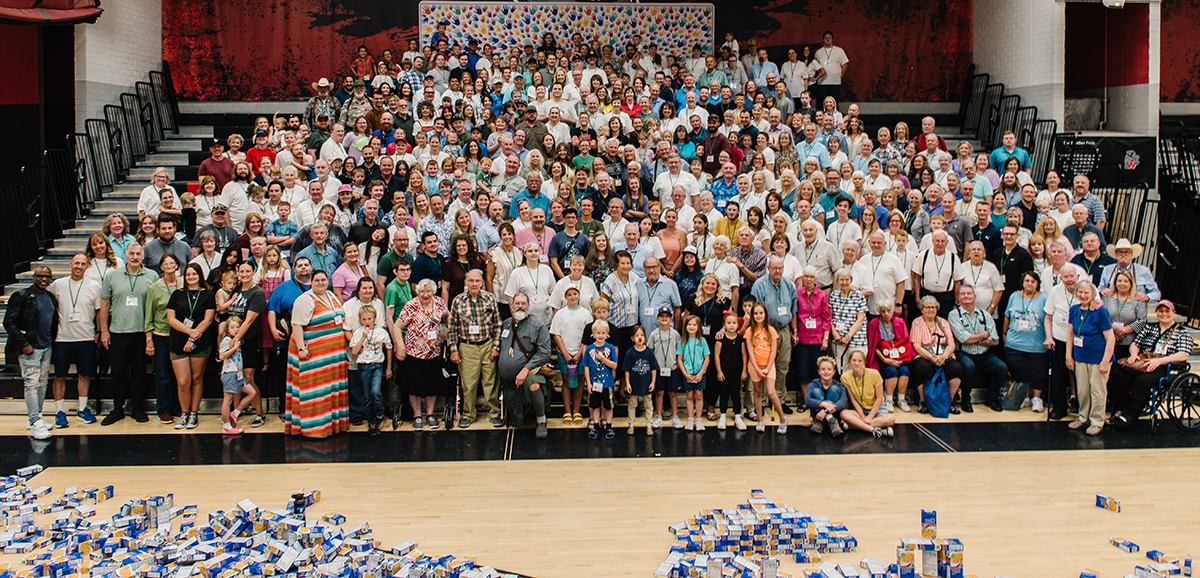Matt and Julie Maddox, editors
As archivist for the Community of Christ Church, Ronald E. Romig has done extensive work with Smith Family artifacts. He graciously sat for an interview with us in August 2009, before leaving to his current work, overseeing the historic Kirtland Temple Visitors Center.
Romig is president of the Mormon History Association and vice-president of the Missouri Mormon Frontier Foundation. He is also co-chair of the Kansas City Archivists Association, and has served as the 1997 president of the John Whitmer Historical Association.
Romig’s interest in Mormon history runs deep. From 1988 to 2009, he worked for the Community of Christ Church in Independence, MO as lead archivist. His current assignment in Kirtland finds him overseeing the historical Kirtland Temple and
Visitors’ Center.
In his youth he had opportunity to worship in the Kirtland Temple–on Christmas, Easter, and special occasions–and his interest in Mormon history runs even deeper. Three generations back, Romig’s family immigrated to Ohio, and there joined the RLDS (now Community of Christ) Church. They were, Romig explains, “religious zealots,” with a passion for Mormon history.
As an archivist, Romig cares for and tries to understand artifacts and information. “Unfortunately,” Romig explains, “a lot of information gets forgotten.” But Romig isn’t about to let that happen.
“I really like local history,†he says, “Missouri church history, an overlooked era.” Romig has worked with the Mormon Missouri Frontier Foundation (MMFF) to erect 30 markers at Mormon Missouri sites. In Independence, although only 2 buildings are left, plaques show where 13 early events took place.
One of his most exciting finds was in Nauvoo: a gold bead from Emma’s necklace. Also interesting was a ceramic cup with fragments, and imprinted “J & E Smith.†“It’s exciting to get to find some things like that,” Ronald Romig explains, “because we know they used these things because they were broken.”
The gold bead and ceramic cup pieces were found in an archeological dig in the latrine outside of the Nauvoo Mansion House. “Some really wonderful artifacts are found in outhouses,” and Romig explains how you know you are at the bottom of the dig, “when you get to the tomato seeds–tomato seeds aren’t digested–you know you are at the bottom.”
The gold bead and ceramic cup are displayed in the Nauvoo Community of Christ Visitor’s Center. When they found the gold bead, they saw a tooth indentation. Romig suggests that David Hyrum probably bit and then swallowed it, breaking the necklace and preserving the bead for archeologists.
Joseph had given Emma a gold bead necklace, which is seen on her neck in the beautiful portraits of Joseph and Emma—the original portraits hang in the Church of Christ museum. Another example of Romig’s archival work is the recent and fun discovery of the artist of the these portraits. These portraits are artistic and vibrant, but the label reads, “artist unknown.” The work is now attributed to David Rogers, a New York artist who joined the early church.
Romig and Glen Leonard from the LDS church have recently identified David Rogers as the artist. Glen Leonard found 9 works of Roger’s art in New York. Joseph Smith recorded in his diary that he sat for an artist. Nothing is said about Emma.
Early speculations had pointed to William Major, but he is not as skilled as Rogers. Rogers is from a European art school. Romig pointed out that the paintings have a series of triangles to complement and reflect each other. In studying the works, Romig had the paintings x-rayed at a hospital. X-rays show the artist didn’t over paint much, indicating an artist who knew what he wanted. They also show a left-handed artist, because the gesso was applied from left to right.
Any visitor to Independence, MO will be well rewarded by a visit to the see the artifacts in the Community of Christ Museum in the Community of Christ temple. A virtual exhibit of Joseph and Emma artifacts is available at www.jwha.info/cofc/cofcmu.htm.

